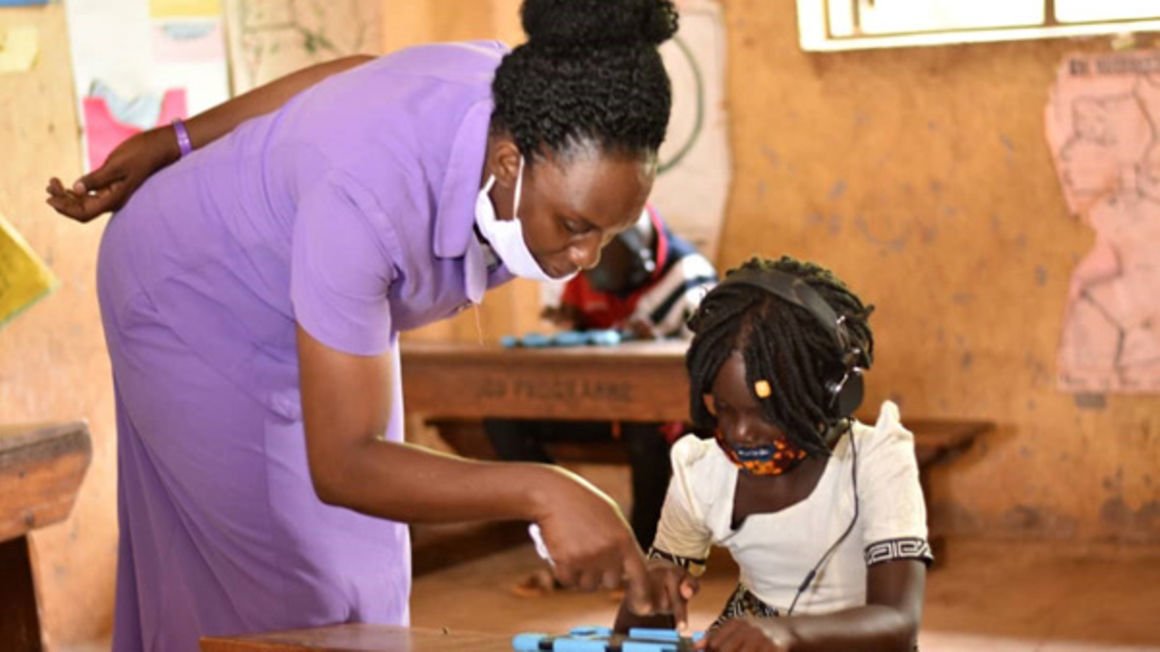How to navigate the ‘new normal’ for African schools

A teacher instructs a pupil on how to use a tablet at Nalongo Church of Uganda in Luweero District in August last year. Students may also lack access to internet-enabled devices such as smartphones and laptops to connect to online classes in the new normal. PHOTO | DAMALIE MUKHAYE
What you need to know:
- The Covid-19 pandemic has disrupted the education of millions of students in Africa, with girls, the poor, and children in rural areas facing the biggest risks. The only way to avert a sharp rise in inequality and malnutrition is to get children back into the continent’s classrooms, Hanan Morsy writes.
Fall Khadidiatou , a 15-year-old Senegalese girl, was desperate to get back to school. Because of the Covid-19 pandemic, hers was closed for most of last year.
Although it offered online classes, limited Internet access in Rufisque, her small hometown, meant she often missed important lessons. Her chances of making the most of her education were slipping away.
Khadidiatou is one of millions of African students whose education has been disrupted by the pandemic.
Many African countries took early steps to contain the Covid-19 pandemic, including closing schools.
Using Oxford tracking data, the latest African Economic Outlook from the African Development Bank (AfDB) reports that 50 per cent of African countries announced school restrictions within three days of the first confirmed cases of Covid-19. Within a month, all of them had done so.
Between February 16 and December 1, 2020, schools in Africa were closed for more than 100 days, on average. While the actual figure was much lower in some countries (below 50 in Madagascar, Benin, and Zambia), it was much higher in others (more than 200 in Ethiopia and Uganda).
On a regional basis, schools in southern Africa were closed for the fewest days (85), and schools in East Africa were closed for the most (137).
Unlike in rich countries, schools in many African countries were unable to shift the curriculum online quickly. In Kenya, despite an 83 per cent internet-penetration rate, 80 per cent of students failed to follow online classes because of unreliable broadband internet.
Students may also lack access to internet-enabled devices – such as smartphones and laptops – to connect to online classes. Even when virtual learning sessions air on radio and television stations, unreliable electricity can disrupt learning.
As a result, countless African students lost an entire semester of learning during the last academic year. Not surprisingly, educational outcomes among students in low-income countries are suffering.
Globally, the estimated lifetime earning loss from pandemic-related school closures translates to a loss of 43-61 per cent of current Gross Domestic Product (GDP) in low-income countries, compared to just 6-8 per cent in high-income countries.
Even within countries, these costs will not be borne equally. Already-vulnerable students – especially girls, children from poor backgrounds, and those living in remote areas – will suffer the most, owing to lower access to digital services, the inability to afford internet-enabled devices, and, in many cases, pressure to contribute to the family’s livelihood.
Add to that the gap between how effectively public and private schools have been able to shift curricula online, and the risk of a sharp increase in educational – and, ultimately, economic – inequality is high.
But prolonged school closures carry an even more immediate danger. When they are not attending school, poor and vulnerable children do not receive school meals – often a critical nutrition source.
The World Food Programme reports that more than 369 million children worldwide missed out on meals during peak school closures in April 2020. This included more than 75 million children in World Food Programme (WFP)- and government-supported schools in Africa, mostly in Egypt, Uganda, and South Africa.
The latest WFP data suggest that, today, more than 50 million students in Africa are still missing school meals. For many of these students, the school meal was the only one they had been receiving throughout the day, and an important reason why they attended regularly.
These students have also lost access to basic health and nutrition services that schools used to provide – and which they may not receive otherwise.
The specter of rising malnutrition is thus looming over Africa, which already accounts for the world’s largest share of undernourished and food-insecure people.
The risks are most acute in Southern and Eastern Africa, which are also battling climate shocks and locust invasions.
Households managed by women – who have been hit, especially hard by job and income losses and Covid-19 infections – are especially vulnerable to malnutrition.
Emergency food aid can help alleviate the threat of malnutrition. But it will do nothing to cancel out the effects of prolonged school closures on human-capital accumulation and inequality. Only reopening schools can do that.
Hanan Morsy is Director of the African Development Bank’s Macroeconomic Policy, Forecasting, and Research Department.
Copyright: Project Syndicate, 2021.
www.project-syndicate.org




